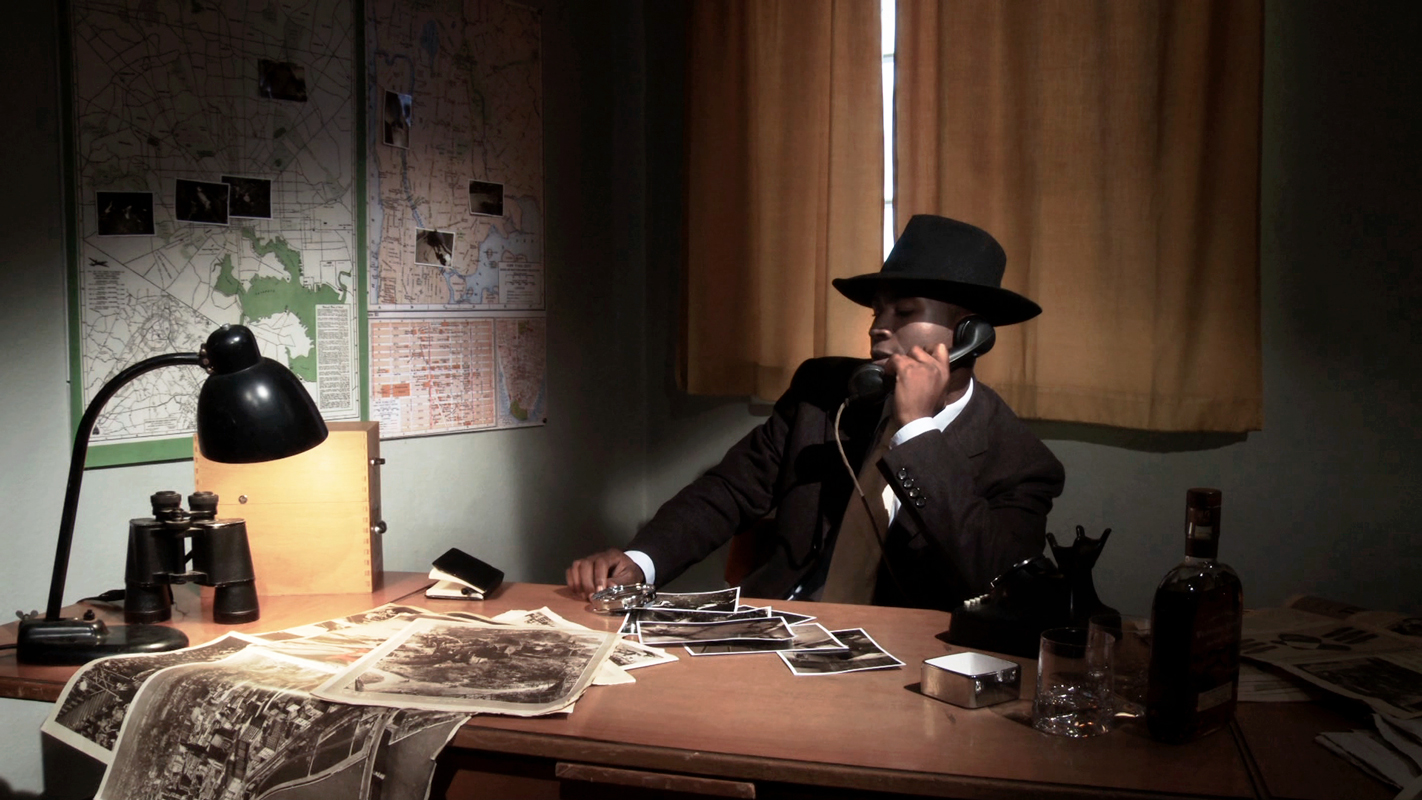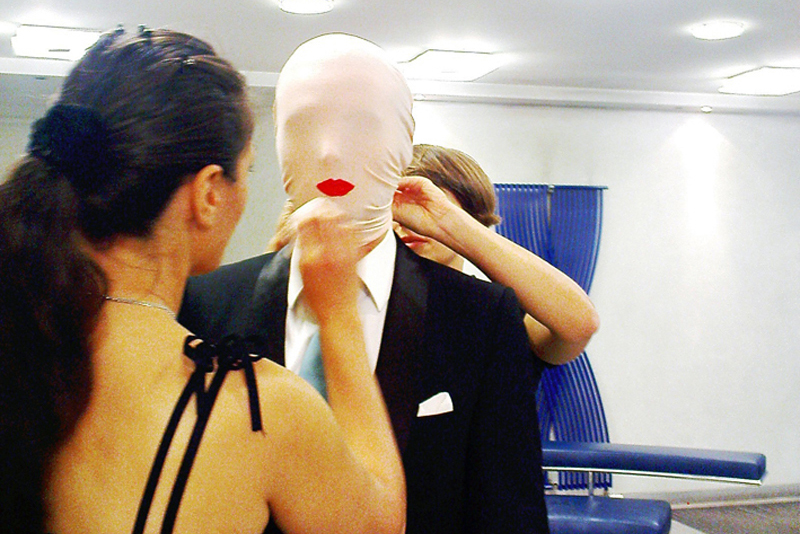2012
HD video, 16:9, 14 min
English with German subtitles
installation: office carpet 480 x 500 cm, 2 custom-made benches, 264 x 40 x 46 cm and 156 x 40 x 46 cm
part II of a trilogy (part I »Dad Dracula is Dead«, part III »Home Time Show Time«)
»A Crime must be Committed« is the second part of a trilogy that deconstructs character stereotypes in European and US film and television history. Scenes and characters from films representing prominent genres are restaged and altered. A Crime must be Committed deals with the crime and detective genre and quotes gangster-films of the 1920s (»Underworld«, 1927), film noir (»The Maltese Falcon«, 1941), detective films (»The Detective«, 1968), crime thrillers (»Die Hard«, 1988; »Shaft«, 1971 and 2000), and the contemporary criminal investigation series (»CSI«, since 2000), among others. This retrospective shows how crime stories, constellations of protagonists, and their assigned roles are subject to change over time. They are the expression of different discourses in which the relationship between good and evil is renegotiated each time in the context of a new social-political situation. The protagonists, from detectives to today’s crime solvers, embody different notions of masculinity. And frequently playing counterpart to the lonely hero or muscle-bound police officers are figures such as the femme fatale or the asexual buddy (for example Morgan Freeman in »Se7en«). Hidden fears, primarily those from the male perspective of society, are seen in the casting of roles (man / women; black / white). These historical patterns and power relationships are examined. Drawing on the aesthetic typical of the respective films, she recombines filmic figures and dialogues in novel ways and creates a new story in a winding, non-linear narrative style. Presented as a loop, »A Crime must be Committed« offers new variations on individual scenes and calls for the reexamination of narrative patterns. The drama culminates in a genre-defying musical scene bringing together all protagonists. In this scene, which Susan Sontag would label as camp, the femme fatale is transformed into a singing film theorist with “I’m your concept, your projection” and other lines, while firmly entrenched roles dissolve in a mass dance number.
crew
written, edited & directed by // Rebecca Ann Tess
assistant director // Julia Jung
cinematography // Sebastian Matthias
camera assistant // Sascha Heyden light design // Sebastian Matthias
light assistant // Sascha Heyden
sound recording // Tobi Goll
music // Anne Imhof
sound mastering // Klangkantine (Christoph Kling, Johannes Schwenk)
choreography // Tanja Kämper
set design, costumes // Julia Jung, Flo Maak, Rebecca Ann Tess
clapperboard // Kirsten Reibold, Christina Stockhofe, Nadine Fraczkowski
translation // David Culpepper, Astrid Magiera
dialect coach // Juliet Berman
still photography // Flo Maak
makeup design // Mellanie Horn, Soudabeh Ganji
catering // Flo Maak, Greta Wagner
produced by // Frankfurter Kunstverein, R. J. Hauser
cast
Kofi Boateng as // Detective Sam Spade, Bruce Willis
Boris Zdravkovski as // Officer Richard Roundtree, Detective John Shaft
Tanja Kämper as // Femme Fatale, Officer #5
Christina Stockhofe as // Gangster #1
Nato Kirtskhalia as // Gangster #2, Officer #6
Mauricio Guillén as // Gangster #3, Officer #7
Julia Jung as // Officer William O. Gillespie
Flo Maak as // Officer Mac Taylor
Martin Walk as // Officer #3
Nadine Fraczkowski as // Doorman
Includes dialogue from the films:
»Underworld« (1927), »The Detective« (1968), »Body Heat« (1981), »The Usual Suspects« (1995), »Shaft« (2000), »CSI« (2000) and the novel »Lush Life« (2008)
Thanks for great support goes to: Dirk Richter (Ardi Goldman Holding), basis e.V. Frankfurt am Main, Lea Welsch, Faites votre jeu Frankfurt am Main, Sara Stehr (Nassauischer Kunstverein), Pille Filmgeräteverleih, Renate Tess, Asok Punnamparambil & Veit Laurent






